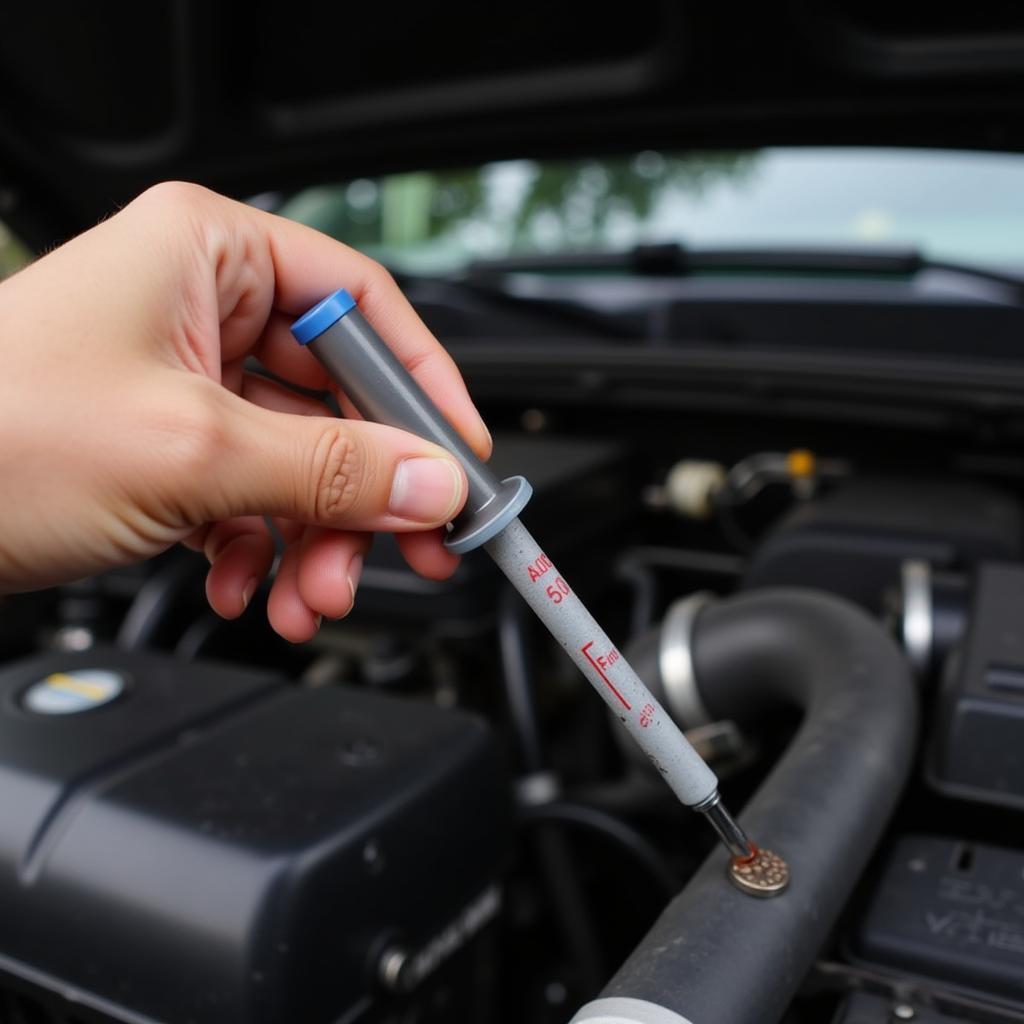The global chip shortage has dramatically impacted the automotive industry, leaving many wondering, “What Is The Chip Problem With New Cars?” This scarcity of semiconductors, crucial components in modern vehicles, has led to production delays, increased prices, and a limited selection of new cars. This article dives deep into the automotive chip shortage, exploring its causes, consequences, and potential solutions.
Understanding the Automotive Chip Shortage
The chip shortage isn’t unique to the automotive industry; it’s a global phenomenon impacting various sectors. However, the car industry has been particularly hard hit. Modern vehicles rely heavily on microchips for everything from engine control and safety features to infotainment systems and driver-assistance technologies. This dependence has made automakers vulnerable to supply chain disruptions.
Why Are Chips So Important in New Cars?
Today’s cars are essentially computers on wheels. Chips control vital functions, enhancing fuel efficiency, safety, and the overall driving experience. From anti-lock brakes and airbags to advanced driver-assistance systems (ADAS), these tiny components play an outsized role. Without them, car manufacturers can’t produce vehicles that meet modern safety and performance standards.
What Caused the Chip Shortage?
Several factors contributed to the chip shortage:
- Increased Demand for Electronics: The pandemic-driven shift to remote work and online learning fueled demand for laptops, tablets, and other electronics, diverting chip supply away from the automotive sector.
- Supply Chain Disruptions: Factory closures, port congestion, and logistical challenges further exacerbated the shortage.
- Just-In-Time Manufacturing: The automotive industry’s reliance on just-in-time manufacturing, which minimizes inventory, left it vulnerable to sudden supply chain disruptions.
- Geopolitical Factors: Trade tensions and political instability have also played a role in disrupting the global chip supply chain.
The Impact of the Chip Shortage on Consumers
The chip shortage has had a significant impact on car buyers:
- Higher Prices: Limited supply and increased demand have driven up new car prices.
- Longer Wait Times: Consumers face extended wait times for new vehicles, sometimes months or even a year.
- Limited Selection: Dealerships have reduced inventory, limiting consumer choice.
How Long Will the Chip Shortage Last?
While the situation is improving, predicting the exact end of the chip shortage is challenging. Experts anticipate that the effects will continue to be felt for some time.
What Can You Do?
If you’re in the market for a new car, here’s some advice:
- Be Patient: Be prepared for longer wait times and potentially higher prices.
- Be Flexible: Consider different makes, models, or even used cars.
- Shop Around: Contact multiple dealerships to compare availability and pricing.
- Negotiate: Don’t be afraid to negotiate the price, even in a seller’s market.
“The chip shortage has forced consumers to be more flexible and strategic in their car buying decisions,” says John Davis, a senior automotive analyst at Market Insights. “Being patient and doing your research is key in this challenging market.”
Mitigating the Chip Shortage: Long-Term Solutions
The automotive industry and governments are working on long-term solutions:
- Increased Chip Production: Investing in new chip fabrication plants to increase global production capacity.
- Diversifying Supply Chains: Reducing reliance on single suppliers and regions.
- Developing Alternative Technologies: Exploring alternative materials and technologies to reduce dependence on specific chips.
“Investing in domestic chip production is crucial for ensuring the long-term stability of the automotive industry,” states Maria Rodriguez, an electrical engineer specializing in automotive systems. “This will reduce our vulnerability to global supply chain disruptions.”
Conclusion
The chip shortage, or more accurately, the semiconductor chip shortage, has significantly impacted the automotive industry, leading to higher prices, longer wait times, and limited inventory for new cars. Understanding the causes and consequences of this shortage is crucial for both consumers and industry professionals. While the situation is gradually improving, the effects are expected to linger. By adapting our buying strategies and investing in long-term solutions, we can navigate this challenge and ensure a more resilient automotive future. Need expert advice? Connect with us at AutoTipPro at +1 (641) 206-8880 or visit our office at 500 N St Mary’s St, San Antonio, TX 78205, United States.
FAQ
- What is the main reason for the car chip shortage? The convergence of increased demand for electronics and pandemic-related supply chain disruptions.
- How does the chip shortage affect car prices? Limited supply and high demand have driven up the cost of new cars.
- When will the chip shortage end? The exact timeline is uncertain, but the effects are expected to continue for a while.
- Should I buy a used car during the chip shortage? It’s a viable option given the limited availability and higher prices of new cars.
- What are car manufacturers doing about the chip shortage? They are exploring alternative suppliers, increasing chip production, and developing alternative technologies.
- How can I find a car during the chip shortage? Be patient, flexible, and shop around at multiple dealerships.
- What is the long-term solution to the chip shortage? Investing in new chip fabrication plants and diversifying supply chains.






Leave a Reply